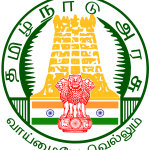- Union Minister of State for Science and Technology Dr Jitendra Singh has said that Ultraviolet-C or UV-C Disinfection Technology will soon be installed in Parliament for the “mitigation of airborne transmission of SARS-COV-2’’.
- The UV-C air duct disinfection system was developed by CSIR-CSIO (Central Scientific Instruments Organisation). CSIR-CSIO said in a statement, that the system is designed to fit into any existing air-ducts and the virucidal dosages using UV-C intensity and residence time can be optimised according to the existing space.
- The statement also added that the virus is deactivated in any aerosol particles by the calibrated levels of UV-C light. It can be used in auditoriums, malls, educational Institutions, AC buses, and in railways.
What is UV?
- Ultraviolet (UV) is a type of light or radiation naturally emitted by the Sun. It covers a wavelength range of 100-400 nm. The human visible light ranges from 380–700 nm. UV is divided into three bands: UV-C (100-280 nm), UV-B (280-315 nm) and UV-A (315-400 nm).
- UV-A and UV-B rays from the Sun are transmitted through our atmosphere and all UV-C is filtered by the ozone layer. UV-B rays can only reach the outer layer of our skin or epidermis and can cause sunburns and are also associated with skin cancer.
- UV-A rays can penetrate the middle layer of our skin or the dermis and can cause aging of skin cells and indirect damage to cells’ DNA. UV-C radiation from man-made sources has been known to cause skin burns and eye injuries.
- UV-C radiation (wavelength around 254 nm) has been used for decades to disinfect the air in hospitals, laboratories, and also in water treatment. But these conventional germicidal treatments are done in unoccupied rooms as they can cause health problems.
- A paper published in June 2020 in Scientific Reports noted that UV-C radiation can destroy the outer protein coating of the SARS-Coronavirus. They showed that 222-nm, known as ‘far-UVC light’, efficiently kills airborne human coronaviruses – alpha HCoV-229E and beta HCoV-OC43. This is different from SARS-CoV-2 virus. There is very limited data on the required wavelength and duration needed to inactivate SARS-CoV-2.
- An in-vitro experiment conducted by Hiroshima University researchers showed that 99.7% of SARS-CoV-2 viral culture was killed when exposed to 222 nm UV-C irradiation at 0.1 mW/cm2 for 30-seconds. The study was published in September 2020 in the American Journal of Infection Control.
- Researchers from the Indian Institute of Technology-Kanpur, who developed a portable disinfectant device that used UV-C radiation (222-254 nm), noted that the device was specifically developed to disinfect non-living things. “UV-C radiation used in this device could be harmful to the skin and eyes of the living beings, therefore the operator of the device must use spectacles with UV-C radiation protection and use this device safely,” noted the paper published in June 2020.




